US Dollar Exchange Rates of 10th May
2018
China Yuan 6.3269
Report from China
Declining wood products trade between China and the
USA
According to the data from China¡¯s Customs the value of
wood products trade between China and the USA fell 16%
to US$1,90 million in March 2018. China¡¯s imports
dropped 5% to US$840 million while exports declined
23% to US$1,050 million.
However, the value of wood products trade between China
and the USA in the first three months of 2018 rose about
9% to US$6.26 billion, China¡¯s imports increased about
6% to US$2.28 billion while exports value grew 10% to
US$3.98 billion.
Log and sawnwood imports
China¡¯s log imports from the USA in the first three
months of 2018 totalled 1.41 million cubic metres, a year
on year increase of 7% over the same period of 2017.
China¡¯s sawnwood imports from the USA in the first three
months of 2018 rose 5% to 709,600 cubic metres.
Exports fibreboard and plywood
China¡¯s fibreboard exports to the USA fell 11% to 71,200
cubic metres and plywood exports to the USA dropped
31% to 360,000 cubic metres in the first three months of
2018.
As exports to the USA decline there has been a rise in
exports of panel products to Nigeria, Kenya and the UK.
In the first quarter of 2018 export volumes to these three
markets were Nigeria; 78,900 cubic metres, Kenya; 9,800
cubic metres and UK; 6,000 cubic metres..
The direction of trade of China¡¯s plywood exports has also
altered with the UK, Thailand and Nigeria becoming more
prominent. China¡¯s plywood exports to the UK, Thailand
and Nigeria rose 28%, 74% and 270% respectively.
Rise in tropical hardwood log imports
China¡¯s log imports were 14.38 million cubic metres in the
first three months of 2018, up 14% over the same period
of 2017, hardwood log imports rose 25% to 4.93 million
cubic metres.
Of total hardwood imports in the first quarter 2018,
tropical hardwood log imports totalled 2.65 million cubic
metres, up 23% over the same period of 2017 and
accounted for 18% of the national total. The value of
tropical log imports in the first three months of 2018 was
US$837 million reflecting a 28% rise.
The average price for imported tropical logs in the first
three months of 2018 rose 5% to US$316 per cubic metre.
Before its log export ban Myanmar was a major source of
tropical logs for China. Data from China¡¯s Customs shows
log imports from Myanmar in the first three months of
2018 were just 2,500 cubic metres valued at US$3.43
million. At an average price of US$1,372 it seems unlikely
that these were plantation logs.
China imported tropical logs mainly from Papua New
Guinea (32%), Solomon Islands (28%), Equatorial Guinea
(11%), Nigeria (5%), Cameroon (5%), Congo Brazzaville
(4%). The top 10 suppliers accounted for over 90% of
China¡¯s tropical log imports in the first three months of
2018.
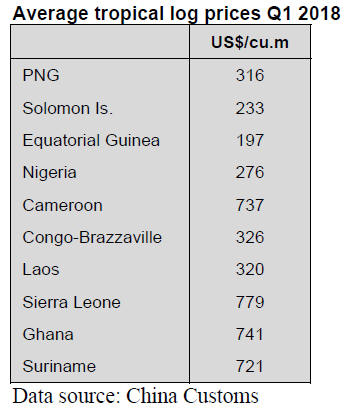
Rise in tropical sawnwood imports
China¡¯s sawnwood imports were 8.29 million cubic metres
in the first three months of 2018, up 5% over the same
period of 2017. Sawn hardwood imports rose 15% to 2.91
million cubic metres.
Of total sawn hardwood imports, sawnwood imports from
tropical coumtries were 1.67 million cubic metres valued
at US$662 million, up 25% in volume and 32% in value
and accounted for 20% of the national total.
The average price for sawnwood imported from tropical
countries was US$395 per cubic metre, down 7% from the
the same period of 2017. Six tropical countries supplied
just over 90% of China¡¯s ¡®tropical¡¯ sawnwood
requirements in the first three months of 2018 namely,
Thailand (72%), Gabon (7%), Indonesia (5%), Philippines
(4%), Malaysia (4%) and Cameroon (2%).
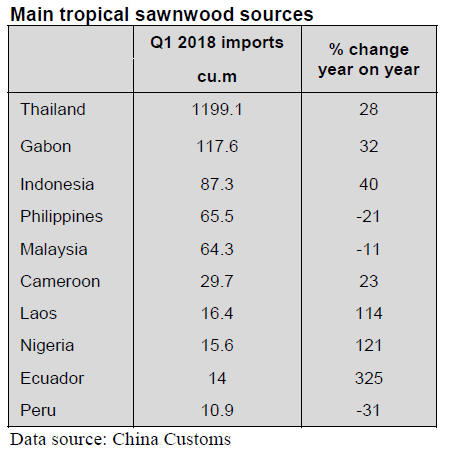
Slow growth in timber processing industry of
Guangdong province
It has been reported that the growth of timber processing
industry in Guangdong province slowed in the first three
months of 2018 and the value of output was RMB100.39
billion. Paper products and wooden furniture are the main
outputs from the industry in Guangdong province.
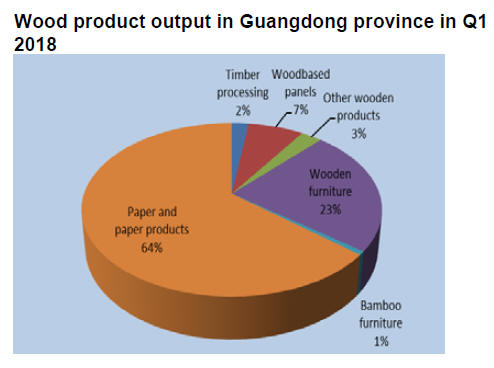
Analysts write that the main reason for the decline in the
value of wooden furniture and flooring output is that
enterprises, especially the Taiwanse companies, have
relocated to Vietnam being attracted by lower taxes and
the educated and abundant labour force.
The products manufactured by companies in Vietnam are
very competitively priced in the international market
which has created a marketing challenge for those
remaining in Guangdong. An additional factor weakening
output from Guangdong mills is that Guangdong Real
Estate Regulations and control policies in the province
have resulted in an almost 10% drop in housing starts.
A further factor behind the decline in output has been the
closure of plants that were technically deficient or could
not afford to comply with stricter environmental
regulations.
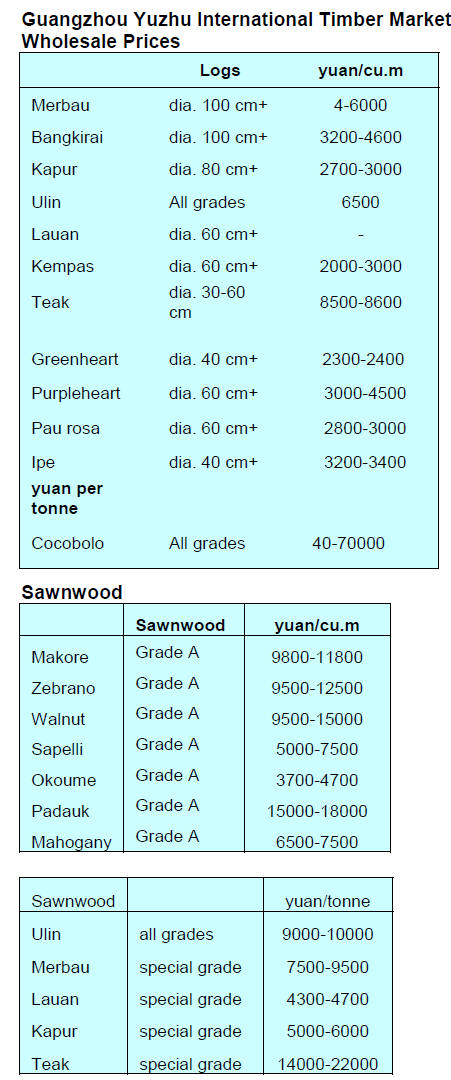 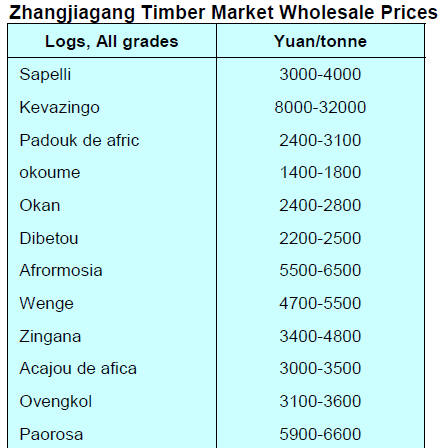 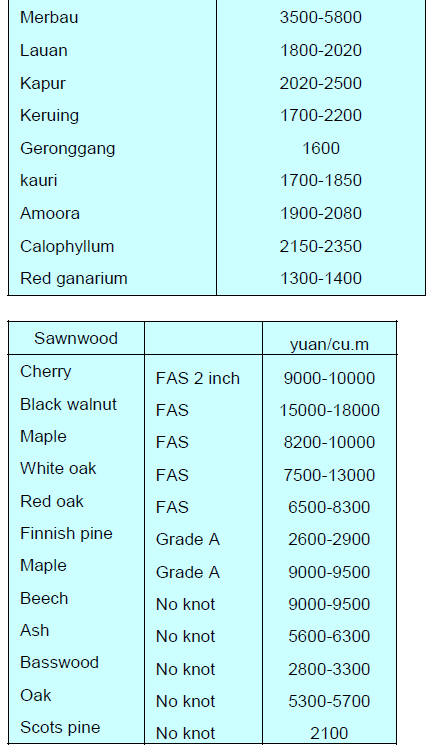
|